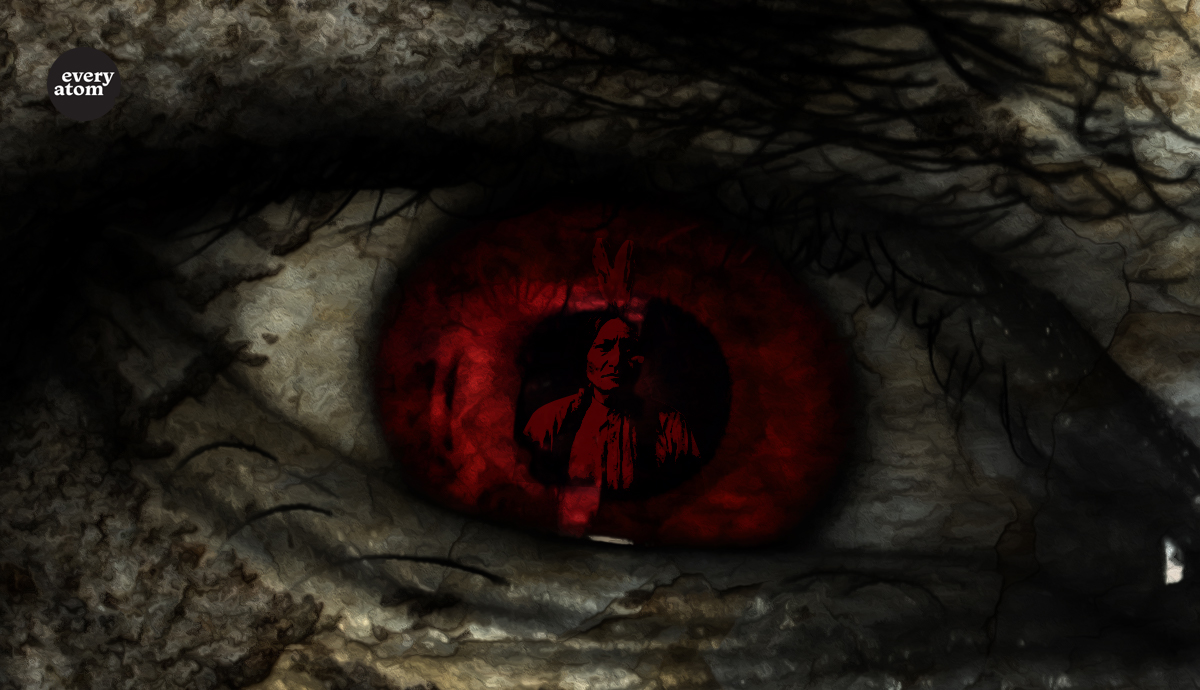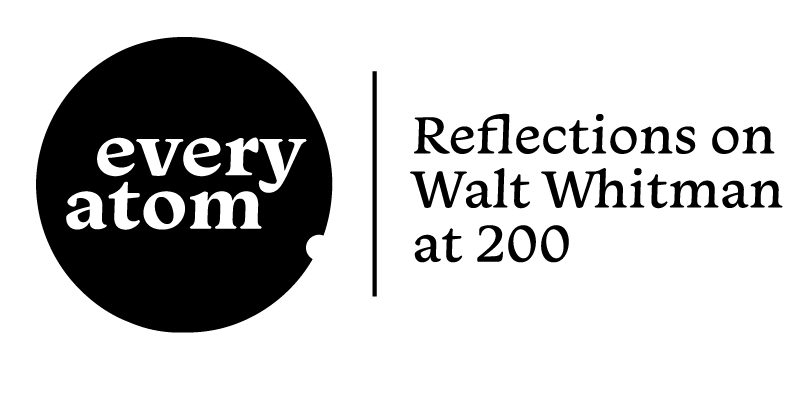Every Atom | No. 51
Introduction to Every Atom by project curator Brian Clements
Perhaps it is an accidental prophecy. Whitman’s contradictions and purposeful shifts, divisions, and manifold complexities so animate the dynamic 1855 “Song of Myself.” There are demons in North America that erupt in violence against bodies. The trapper in the passage above, he the killer of furry mammals, he the groom of “a red girl,” so dominates the figures around him. The rifle orients value in exchange and union to bolster the “far-west” matrimony of white and “red.” The heathens were to be exterminated, or blended into racial, outback division. They were “dumbly smoking” as he “lounged”—a great, quiet dissonance of forms.
Not by contrast, the run-away slave of the second stanza finds shelter in the anonymous free (white) home, delivered poetically, sympathetically, as Whitman’s self’s own, the “firelock leaned in the corner.” The weaponry recalls bottom-line terms of an American occupation of inexhaustible appetite. A possession of self, of form. To be self-possessed. Possession as how many tenths of the law?
To lay claim to the animals, to women, and to local, aboriginal bodies. To lay claim to the escaped slave’s refuge and safe passage, guarded all the while by that firelock; owned by a disposition requiring all that is good and all that is evil, a shoe-horned inclusivity.
Whitman’s bardic song in 1855 is underwritten by demonic transaction. Fifty-six million indigenous people were exterminated in the New World within the first 100 years of European occupation. Whitman did not know in 1855 this horrific estimation. Nor how could he know in 1855 an attitude of paternal charity to an escaped slave linked other invisible chains in the shared destinies of whiteness and blackness in America?
The momentum of Whitman’s stanzaic frames, his paratactic embrace of contradiction, emblazons with seductive, vocalic energy. The Bard’s weapon is a wide identification of potencies; it supports the stylistic comradery of “Song of Myself.” If there is prophecy it is because demonic energy awakens Whitman to an old reality of the New World. Intention is gained by forceful entry to the other; racial and individual, an extreme and violent contraction of selves toward non-entity. Other serves as a prop to Whitman’s song, his cannibal selfhood.
It is difficult for white Americans to articulate a truth about the current state of their existence because there is only a past and future outlined for the continent. The present appears as violent tension, an overcharged enthusiasm from which it cannot escape. Those of us like Whitman who were born into the New World are tormented by an inability to be present among things, whether we know this or not. Whitman’s voice cannot be silenced by any conceivable attribute. Our loaded guns rest above the mantel, our muskets by the door.
Recommended
Nor’easter
Post-Op Appointment With My Father
Cedar Valley Youth Poet Laureate | Fall 2024 Workshop







